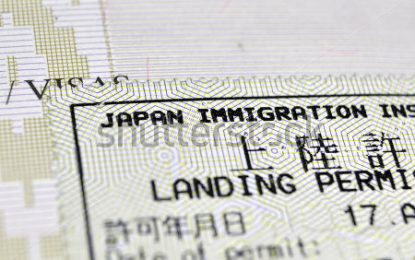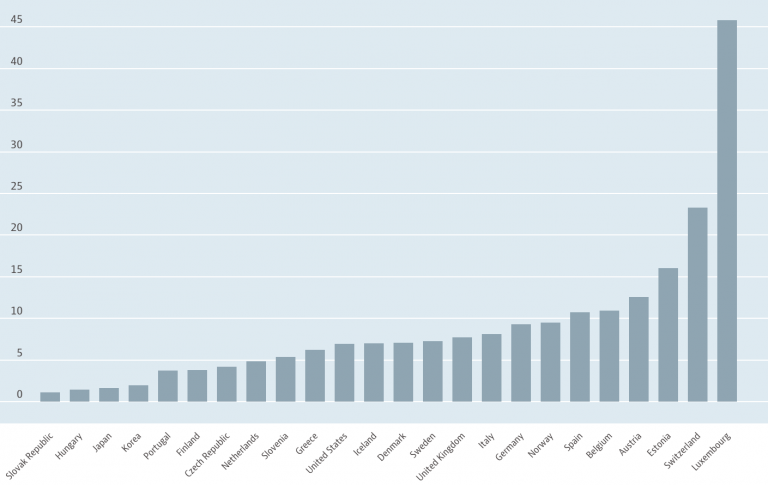
The issues of race and migration in contemporary world and Japan
by Sumire Ebara
Migration is one of the topics media all over the world are concerned with most. Today, I am going to discuss the current discourse on migration in the Western media with regard to race. Furthermore, this blog will also introduce the issues related to migration and race in Japan. I suggest that the frequency and the way in which people talk about these issues in Japan differ from those in any other developed countries due to the intense homogeneity of Japanese ethnicity.
I think it is safe to say that we see news, images or reports that talk about migration or race almost every day. The number of people leaving their homelands forced by the effects of accelerating globalisation and escalating severe and cruel wars in Africa and the Middle East and pursuing better and safer living standards has significantly increased. Gale (2004) argues that the increasing number of refugees and asylum seekers has raised discussions and concerns about border control in developed countries. This is because post-modern racism emphasizes the differentiation between us, who are usually identified as the majority of white people, and them. This discourse allows the nationals (mainly the privileged white people in Western countries) to see non-nationals as ‘Others.’ In addition, due to the upsurge in terrorism by Islamic radicals, people started to associate terrorists with the others. Therefore, the fear of terrorists became as strong as the fear of others who might damage national borders or national identities in the Western world.
According to Gale (2004), the media are one of the driving forces that implant the fear of others into people’s minds. Their use of language as well as of images has a strong impact on how we perceive migration and race. For instance, we often see newspapers or TV shows portraying illegal immigrants such as boat people who approach the shores of Australia and southern Europe as bad people who disrespect the border protection policy and law. This kind of news reporting tends to justify our perspective of hatred and fear towards refugees and asylum seekers, especially those from the Middle East. In addition, this suggests to the governments the need for stricter border controls in the name of protecting national identities and culture. On the other hand, there are reports that criticise governmental policies on border controls including strict selection processes of asylum seekers and refugee detention centers. These reports trigger the discussion of humanitarian principles because denying sanctuary to asylum seekers who might have come across the line between life and death seems to be an inhuman thing to do. Thus, media have always driven us unstable because there is a contradictory position that is border controls versus human rights.

Graph 1. Source: Japan Ministry of Internal Affairs and Communications Statistics Bureau (2017)
Now, let me move on the next topic: migration and race in Japan. The country is known as one of the most homogeneous countries in the world. Whereas most developed countries have experienced the excessive increase in immigrants from all over the world, immigrants only constitute an extremely small proportion of the population in Japan. According to a graph provided by Green (2017), although the share of foreigners (defined as those who are non-Japanese nationals) in Japanese population has been slightly increased over the past 30 years, it still marked only 1.8%, which means 92% of the people living in Japan hold Japanese passports. Without any doubt, Japan has one of the lowest shares of foreign nationals living in OECD countries as you can see in the second graph presented by Green.

Graph 2. Source: Organizations of Economic Co-operation and Development (2013)
As a Japanese citizen, when I think of this fact and connect it to another big issue in Japan, that of an aging society and low birth rates, I wonder whether it is perhaps better for the future of our country to promote immigration of young foreigners as labour forces so that we can boost our economy. But, of course, this is not an easy task. I personally think that there are two reasons behind the small number of immigrants in Japan. One is its geography. Japan is located far from Africa or the Middle East, which makes it difficult for asylum seekers to try to reach this country unless they can afford to board a flight. The second reason is that historically we have not experienced a big shift in racial or ethnic groups, and people are not accustomed to interacting with ‘Others.’ Therefore, it is even more difficult for non-Japanese nationals to live in Japan. Since the national isolation policy in the Edo era (when Japan shut down any interaction with overseas except China and the Netherlands and prohibited Japanese people going abroad between 1639 and 1853), Japanese ethnicity has always been extremely homogeneous with only a small minority of Korean, Chinese, American, and South American people resident in the country.
As I mentioned earlier, Green also argues that the government has promoted immigration in order to cover up the shortage of labour force. However, the government prefers to promote elderly and female workers over immigrants. It seems that neither the government nor Japanese citizens are ready to welcome immigrants. Moreover, there is no public discussion of the influence and the results of promoting immigrants. In fact, in my 21 years of life, I have never encountered a situation where people talk about refugees and asylum seekers from the Middle East. Additionally, Curran mentions in his article that the government officials tend to highlight that foreign workers in Japan such as those employed as construction workers are not immigrants but ‘guest workers,’ which shows unwillingness of the Japanese government and society to authorise foreigners’ permanent residence.
In conclusion, in Western countries, the increasing number of refugees and asylum seekers led to frequent discussions of migration and race among policymakers and the media. Unlike that, Japanese society has not responded to this issue because the nation has not been a main recipient of immigrants, and border control and humanitarian aspect are not seen as what might affect the national identity. I would like to finish by saying that, in order to maintain Japanese economy and guarantee the wealth of future generations, the government and media must speak up more actively on the topic of race and migration.
References
Gale, P. (2004). The refugee crisis and fear – Populist politics and media discourse. Journal of Sociology, 40(4), 321-340.
Green, D. (2017). As Its Population Ages, Japan Quietly Turns to Immigration. Migration Policy Institute. (Accessed April 27, 2017).

0 Comments